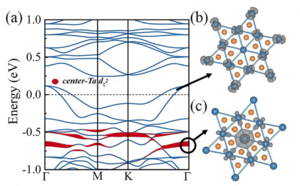
Fields of interest | Multiple charge density wave phases in 2D materials: TaTe2 Mechanical Properies of MoNbTaW High-entropy Alloys |
| Publications | Google Scholar |
Research
Theoretical Study of Interfacial Characteristics and Optoelectronic Properties in Transition Metal Dichalcogenides Heterostructures: In my research I will aim at using first-principles calculations combined with the effective physical models to investigate the interfacial properties, electronic structures and energy level alignments of the semiconducting TMD/TMD heterostructures. The coupling of interlayer electronic states will be clarified, and the effects of the intrinsic doping of TMD layers on the electronic structures and energy level alignments of the TMD/TMD heterostructures will also be revealed. We hope to give a deep understanding of the optoeletronic progress, i.e., charge generation, separation and recombination, which take place at the interfaces of heterostructures. Finally, we will propose effective intercalations of atoms or molecules at the interfaces, to control the interfacial electronic structures and energy level alignments of heterostructures and then to optimize their optoelectronic properties.
Multiple charge density wave phases with contrasting electronic properties in monolayer TaTe2

Layered transition-metal dichalcogenide TaTe2 shows a unique 3×3 charge density wave (CDW) order, different from isostructural TaS2 and TaSe2. Here, using first-principles calculations, we reveal the presence of multiple competitive CDW orders (3 × 3, 4 × 4 and √ 13 × √ 13) with very close formation energies in the monolayer limit of TaTe2. The emergences of the CDW orders lead to the reduction of the density of states at the Fermi level of the metallic 1 × 1 phase in monolayer TaTe2. In particular, a metal-to-semiconductor transition is induced in the 4 × 4 CDW phase, while the metallicity is still maintained in the formed 3 × 3 and √ 13 × √ 13 CDW phases. More interestingly, under hole (electron) doping, the 4×4 (3×3) CDW phase will have an obviously lower total energy than the other two CDW phases, which offers a feasible route to realize phase control in monolayer TaTe2. Finally, we show that in multilayer TaTe2, like the bulk case, the 3 × 3 CDW order rather than the other two orders will appear at low temperature, due to the presence of the interlayer coupling
